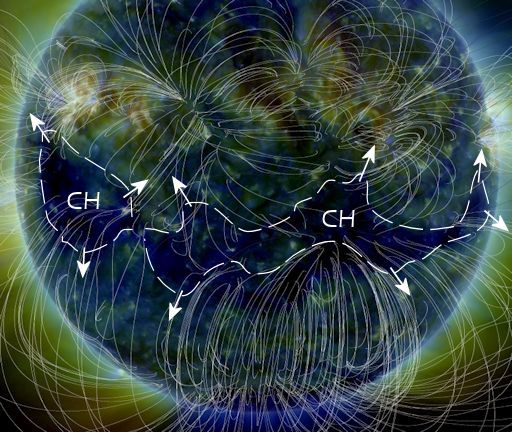An unusually wide and sinuous hole has opened in the sun’s atmosphere, and it is stretching like a gash across the sun’s entire southern hemisphere.
NASA’s Solar Dynamics Observatory photographed the structure using false-color ultraviolet telescopes on Feb. 17th:
![[]](http://www.spaceweather.com/images2017/17feb17/ch_strip.jpg)
This is a “coronal hole” (CH)–a region where magnetic fields open up and allow solar wind to escape. A fan-shaped stream of solar wind flowing from this broad hole will buffet Earth’s magnetic field, off and on, for the next two weeks.
Much of the material will pass to the south of our planet, mitigating its impact; this is not considered a major space weather event. Nevertheless, the sustained action of the glancing solar wind will keep Earth’s polar magnetic field in an unsettled state through the end of February.
Overall, this is good news for Arctic sky watchers, for whom nightly episodes of auroras can be expected. In fact, the month could end with an impressive light show. Long-range forecasts by NOAA analysts suggest that G1- and G2-class geomagneic storms are possible on Feb. 27th and 28th when Earth passes through the tail-end of the solar wind stream.
Source: Spaceweather.com

































Leave a Comment
You must be logged in to post a comment.